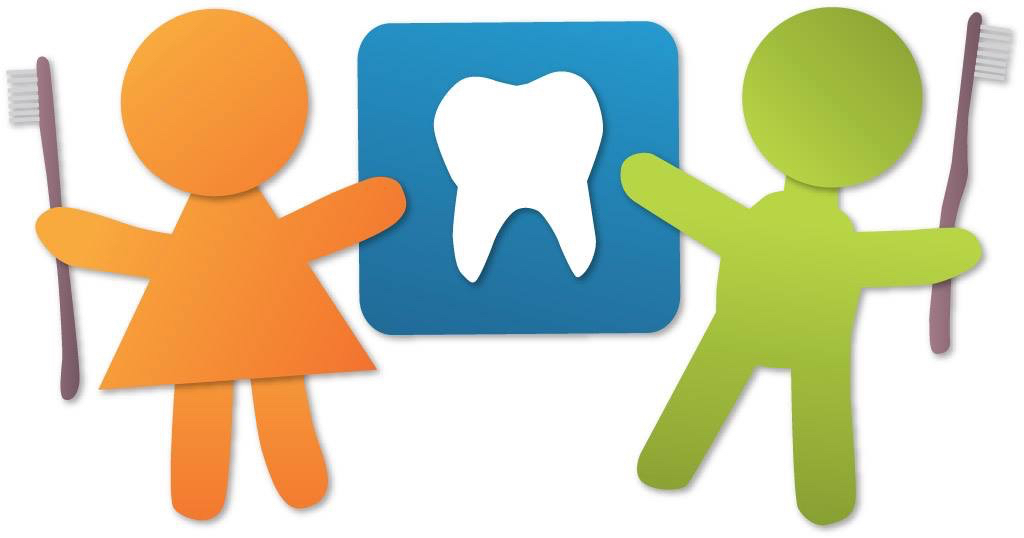Are the stains on my child's teeth cavities?
Stains on your child's teeth can be caused by many different factors. Yes, they can be cavities. Having a dental exam will allow us to inspect the stained surfaces and determine whether or not your child's teeth need to be treated. After the possibility of a cavity has been ruled out, we can then search for other causes of the staining problem.
Stains are a common reason for discoloration of your child's teeth. External (extrinsic) stains on the surface of your child's teeth are more common and are caused by an accumulation of dark colored foods and drinks and poor oral hygiene. Usually, a thorough professional dental cleaning will remove these deposits and clean off stains.
Intrinsic stains are rarer and can be caused by many factors such as the use of tetracycline, severe cavities during early childhood, or changes with the tooth's nerve due to trauma or high doses of fluoride in the natural water supply. Discolored or dark teeth may be a sign of previous trauma to your child's tooth. The forming teeth may be stained gray to yellow to orange during their development. Some stains can be bleached out, while others will need to be covered by bonded plastic resins called veneers.
Tetracycline antibiotics will stain teeth that are forming at the time that the drug is being used. As a result, tetracyclines are no longer given to pregnant women or children under twelve (except in life-threatening cases).
Newly erupted primary teeth may have a yellow membrane on them that will wear off in a few days. Newly erupted permanent teeth appear more yellow than their milky-white primary neighbors. This is their normal, permanent color. The permanent teeth are darker because they are denser so that they can last a lifetime.
White color is not always good! Chalky, white spots on your child's permanent teeth can be the result of trauma to a primary tooth while his/her permanent tooth was developing in his/her jaw. Or chalky, white lines at the gum line or around orthodontic braces can be a warning sign. Decay starts by removing minerals, especially calcium from the outer surface of your child's teeth. This softens the teeth and allows the acid from the bacteria in the plaque to work more quickly. If excellent oral hygiene (brushing and flossing) is started at this point and if a concentrated fluoride paste or varnish is used, these areas can harden again by remineralizing. But, the chalky, white lines on your child's teeth will remain.
The chalky white stains are active cavities, leading to actual cavitations. THis child may need root canals and crowns to fix his teeth.
If one or two teeth are dark grey, pink, or yellow, this may be the result of those teeth having been hit accidentally. Your child should be seen soon thereafter for an x-ray of his/her teeth and a discussion about possible things that may happen to his/her teeth.
Stains mentioned below are all easily removed by simple polishing in our office using a rotating rubber cup and pumice.
Green or Orange Stain: usually on your child's front teeth at the gum line. It is caused by color producing (chromogenic) bacteria. Colonies of these orange or green bacteria usually mean that you need to do a better job of cleaning your child's teeth. It could also mean that your child is a mouth breather.
Brown or Yellow Stain: very likely from antibiotics. The most common antibiotic to stain the surface of your child's teeth is Amoxicillin. A single dose may cause a yellow to brown film to form on the teeth of some children. The stain may disappear partially or altogether once the prescription of antibiotics is finished.
Black Stain: very often this stain is caused by chewable or liquid iron supplements or even multiple vitamins with added iron. This stain polishes off very easily. Some populations naturally form a black line on the teeth at the gum line of all the teeth. It tends to reform rather quickly after removal. Where this comes from is unknown. But, we do find that the black stains in your child's teeth is not related to the number of cavities that your child may have.
Bringing your child into our office will allow us to diagnose the possible cause of the stain or discoloration, to treat it, and to discuss with you ways of preventing similar problems in the future.
Doctor Wang, Doctor Perea-Corkish, Doctor Gerodias and the other Doctors of Discovery Pediatric Dentistry make no warranties, expressed or implied, as to any results to be obtained from use of the information on this page. We cannot diagnose or treat patients over the Internet. Information on this site is for educational purposes only. You should not rely on this information as a substitute for personal, medical, and/or dental attention or diagnosis. Without all available information about a patient, it is impossible to make a diagnosis. Help and answers are in the form of general ideas. Only you, your dentist, and other necessary and qualified health care providers can make an appropriate treatment decision in an emergency or for everyday care and dental treatment.



